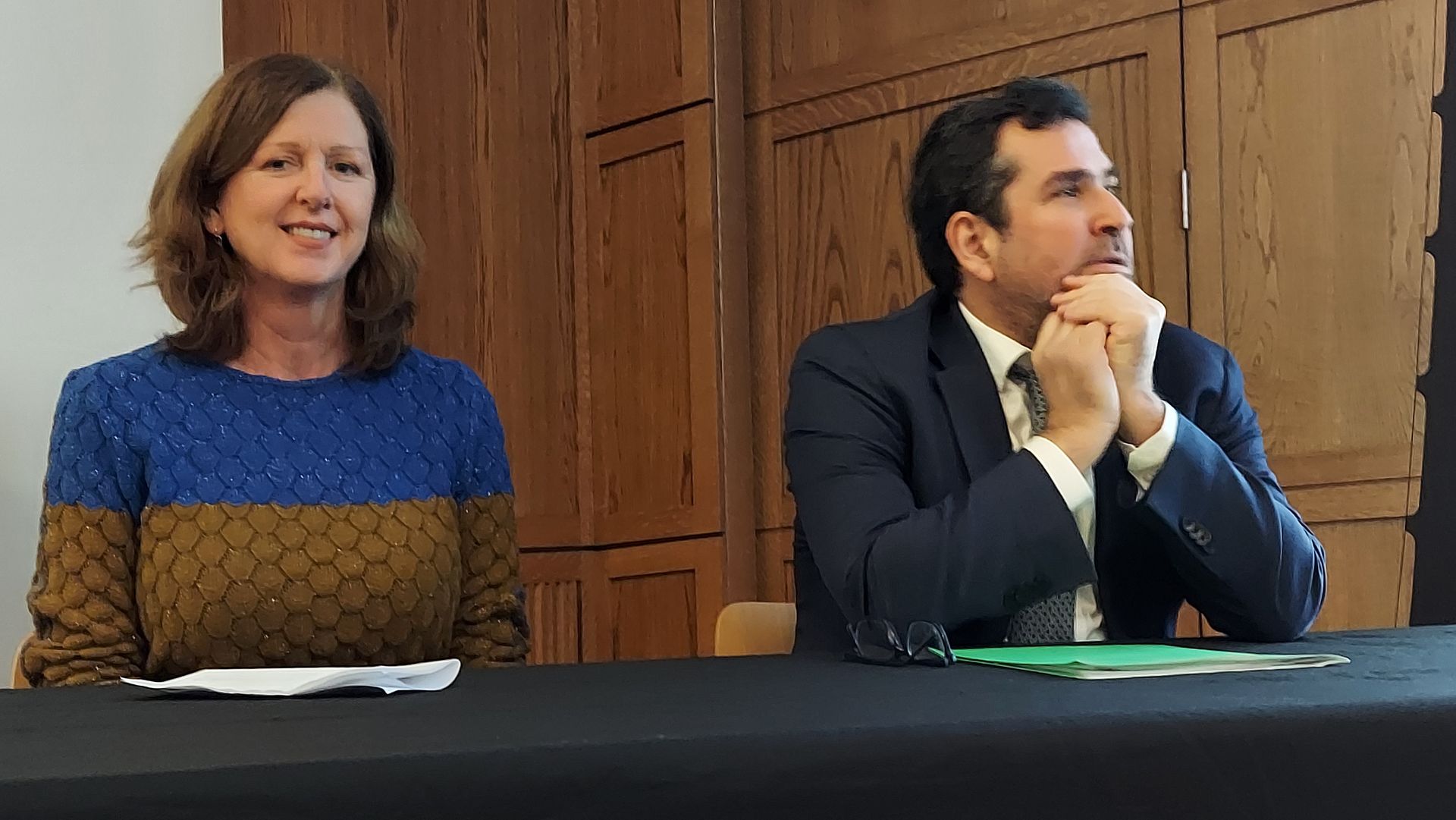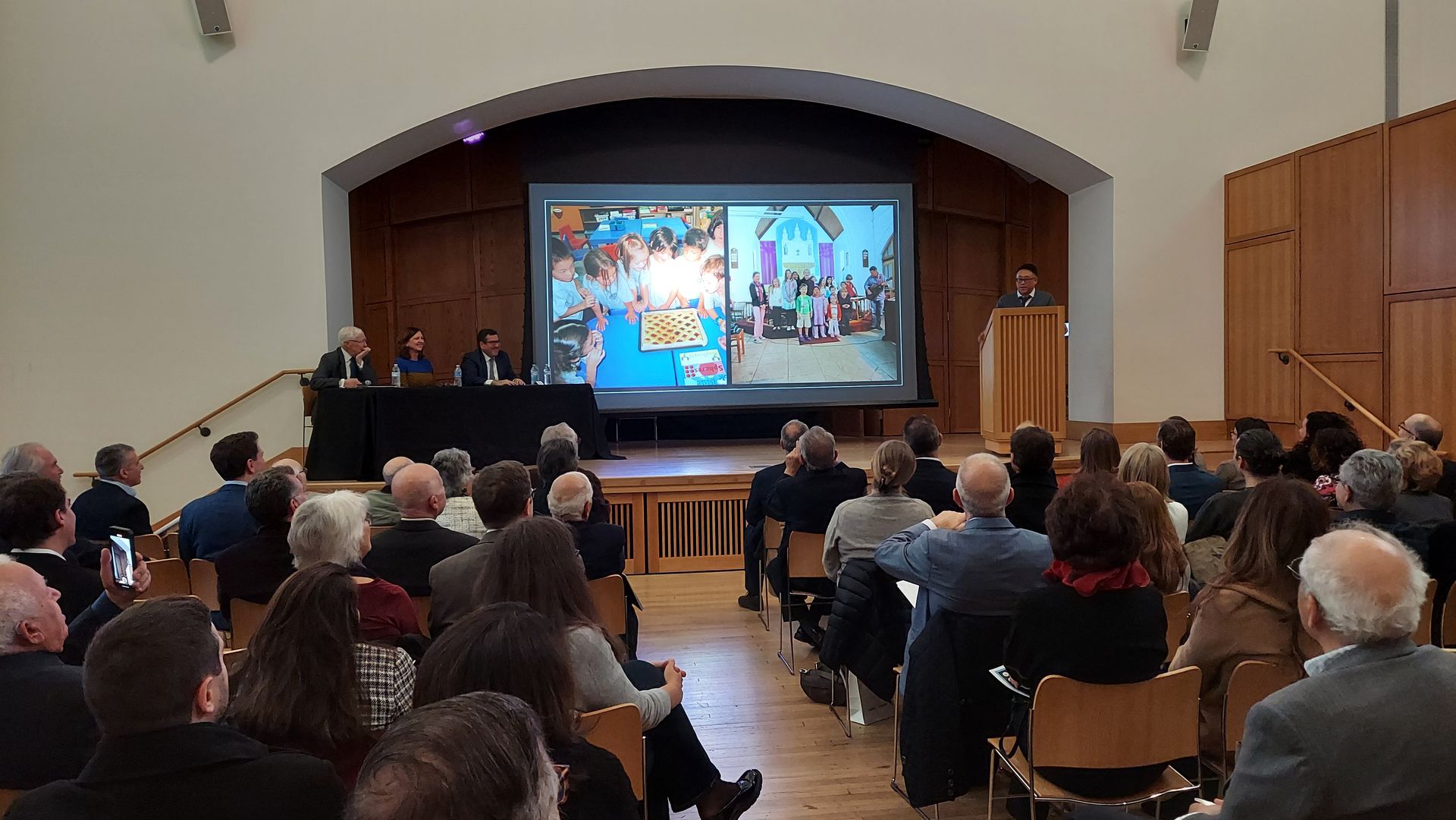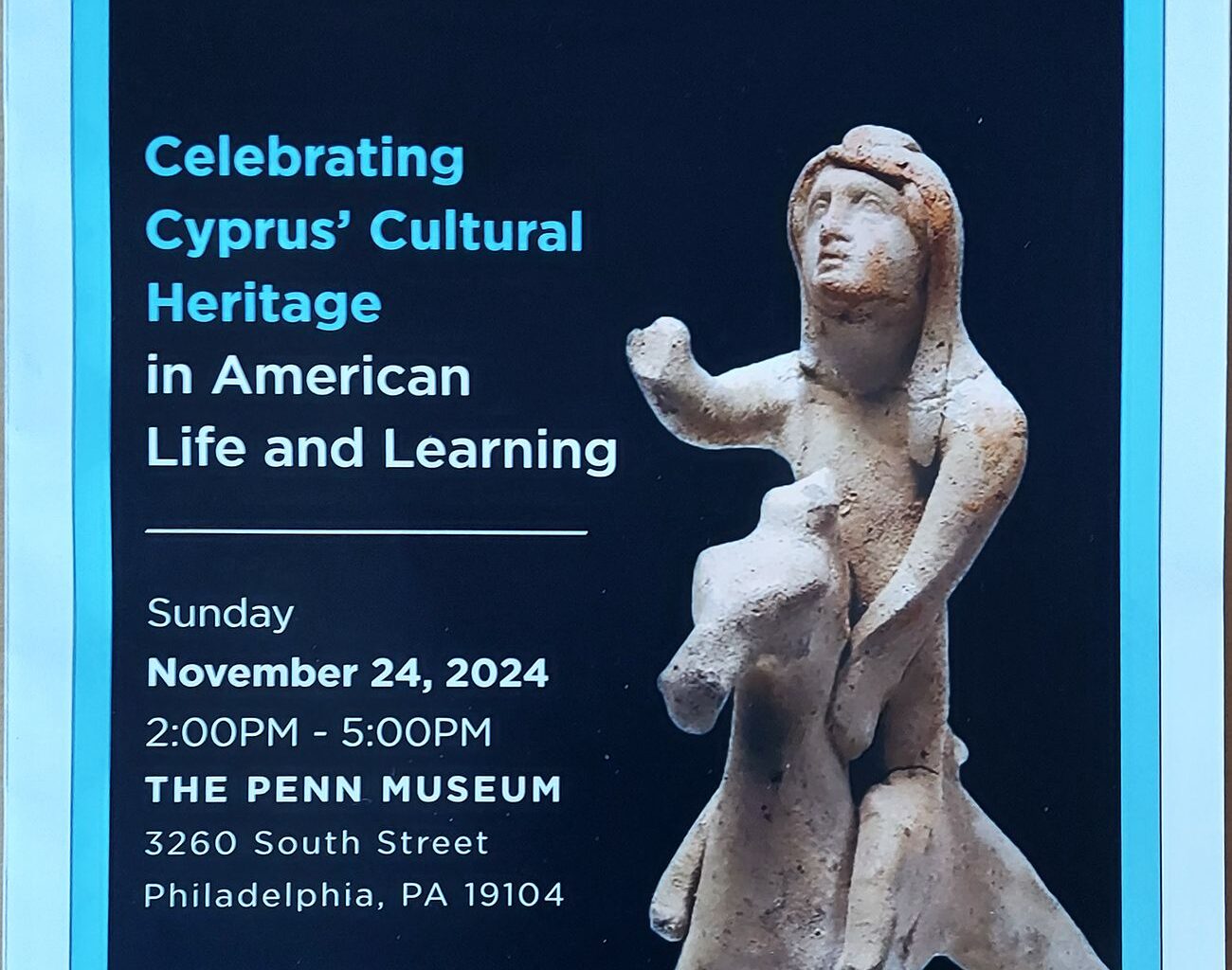Annemarie Weyl Carr ([email protected])
On November 24, 2024, four regional institutions with an interest in Cyprus joined to celebrate Cyprus’ centuries-long cultural heritage and its role here in America. Titled Celebrating Cyprus’ Cultural Heritage in American Life and Learning, the event was organized by the Cyprus Society of Greater Philadelphia and the Cyprus American Archaeological Research Institute (CAARI) in Nicosia. Planning was guided by a dedicated committee from both organizations, including Anna Sophocles Hadgis, valuable member of both; Dr. George Kyvernites, Dr. Costas Pistos and Dr. Stelios Tsinontides of the Cyprus Society; and Dr. Zuzana Chovanec and Prof. Annemarie Weyl Carr of CAARI. Both organizations exist to expand knowledge and understanding of Cyprus’ heritage; both work to support stipends for further study—CAARI for its pre-and post-doctoral research fellowships, the Cyprus Society for an annual scholarship for the ongoing education of an outstanding high-school graduate; and both placed learning at the center of their goal for the event.
Learning appealed deeply to the event’s third participant: the Embassy of the Republic of Cyprus in Washington. The Ambassador of the Republic of Cyprus, Mr. Evangelos Savva, has devoted significant energy during his time in the United States to encouraging Cypriots in diaspora to cultivate and celebrate their Cypriot cultural heritage. He gave his full support to the event.
The fourth participant was The Penn Museum in Philadelphia. It provided a stellar setting for the event. It provided its Widener Auditorium and opened its galleries to the guests. Among its treasures from around the globe are precious artifacts from its excavations on Cyprus, housed in the newly reinstalled Eastern Mediterranean Gallery. Guests were invited to move freely through the Gallery and discuss the Cypriot treasures with Penn curators.
Though the event acknowledged the anniversary of 1974, it was not somber. It was a festive appreciation of Cyprus’ cultural resilience and connectivity over time. The program opened with an address by Ambassador Evangelos Savva, who spoke on Cyprus’ Cultural Heritage as a Factor in Present-Day America. He pointed out the Cypriot art in American museums, the vitality of Cypriot-American societies like that of Philadelphia, and cultural events focused on Cyprus like the recent symposium on attitudes to 1974 in the diaspora organized by CAARI Trustee Young Richard Kim. But he also invoked the painful abrasions, both spiritual and physical, that have been inflicted upon Cyprus’ cultural heritage by the division of the Island, and he urged Cypriots in the diaspora to be aware of them, and to raise American consciousness about the ongoing toll of this separation.
Thanks for reading Hellenic News of America
The Ambassador’s presentation was followed by an international panel of four scholars from CAARI, who gave individual slide presentations on their current research projects on Cyprus itself. The panel was moderated by Mr. Keith E. Peterson, former CAARI Trustee and author of a book on the Fulbright Commission in Cyprus. The Fulbright Commission was among America’s biggest contributions to learning on Cyprus, awarding study fellowships to Cypriots of both north and south. Fellowship recipients, including the Cyprus Society’s Dr. Tsinontides, had—as Keith Peterson said—”gone on to do wonderful things.”
First on the panel was Dr. Lindy Crewe, Director of CAARI. She explained how CAARI came to be founded in the wake of 1974, and then focused on the many contributions it has made to fostering research on Cyprus, both in the US and internationally. CAARI occupies a key position in the heritage studies landscape of Cyprus, collaborating closely with Cypriot institutions, supporting a regular flow of fellowships for researchers from abroad, and hosting lectures and the annual summer archaeological workshop for local audiences. Then shifting to her role as a practitioner of Cypriot archaeology, she discussed the impact that the continuing division of the island has had on our understanding of the archaeology of Cyprus, and explored more recent work, particularly at her own archaeological site of Kissonerga in the southwest of Cyprus.
After Dr. Crewe, CAARI Trustee Prof. Young Richard Kim of the University of Illinois Chicago charmed the audience with his The History and Culture of Cyprus: Thoughts from Abroad, recounting heart-warming memories of the experiences with his wife and young sons as they befriended welcoming Cypriot families. Then two scholars under the shared title, Revisiting Cypriot Connectivity with the Mediterranean: New Insights from the ‘ComPAS’ Project, discussed the interdisciplinary research project ‘ComPAS’ (= “Commercial Patterns Across the Sea”), which has received a European Research Council Starting Grant of €1,254,354 to investigate eastern Mediterranean commercial connectivity in the Late Bronze Age and Early Iron Age (ca. 1650 – 1100 BCE, and 1100 – 750 BCE). Dr. Artemis Georgiou, Assistant Research Professor at the Archaeological Research Unit (ARU) of the University of Cyprus and the Principal Investigator of ‘ComPAS’, introduced the project’s aims and methodology. Dr. Anna Georgiadou, in turn, Associate Researcher for the ‘ComPAS’ Project in the ARU, presented a case study from the project in which the contents discovered in some containers had yielded unexpected insights, including a tender Early Iron Age infant burial.
The panel was closed by Dr. Laura Swantek of Phoenix College, Arizona, who is the Director of the Kourion Urban Space Archaeological Project (KUSP) in Cyprus. KUSP had a special double significance for this event. First, KUSP continues the archaeological work begun at Kourion in 1934 by the University of Pennsylvania. So it is that The Penn has the artifacts from Kourion that captivated guests of the event. Second, KUSP also functions as a field school. Every year, students from multiple colleges and universities come to Kourion to learn how to be archaeologists, and about Cypriot culture. Dr. Swantek spoke vividly of her love of introducing American students to Cyprus’ culture and life. Thus KUSP shows how archaeology can offer opportunities for American students and so can foster the bonds of Cyprus and America that Ambassador Savva encouraged.
The panel took lively questions from the audience—you can see a raised hand in the photo. Speakers and audience then spilled together from the Auditorium into the Museum’s galleries. Conversation mounted as they moved first to the visual feast of Cypriot artifacts and thence to the gustatory feast of a reception, with Cypriot food and Cypriot drink, topped off with Commandaria for all. It was a buoyant close to an afternoon of shared intellectual and emotional affirmation, joining Cypriots in the diaspora to their centuries-deep cultural heritage at home.
 Dr. Lindy Crewe, Director of CAARI, and Ambassador Evangelos Savva
Dr. Lindy Crewe, Director of CAARI, and Ambassador Evangelos Savva
 Prof. Young Richard Kim tells of his family’s experience on Cyprus. Mr. Keith Peterson, panel moderator, sits at the far left, with Dr. Crewe and Ambassador Savva
Prof. Young Richard Kim tells of his family’s experience on Cyprus. Mr. Keith Peterson, panel moderator, sits at the far left, with Dr. Crewe and Ambassador Savva
 The panelists during the discussion: from the left, Mr. Keith Peterson, Dr. Lindy Crewe, Ambassador Savva, Prof. Laura Swantek, Dr. Artemis Georgiou, Dr. Anna Georgiades, and Prof. Young Richard Kim
The panelists during the discussion: from the left, Mr. Keith Peterson, Dr. Lindy Crewe, Ambassador Savva, Prof. Laura Swantek, Dr. Artemis Georgiou, Dr. Anna Georgiades, and Prof. Young Richard Kim
